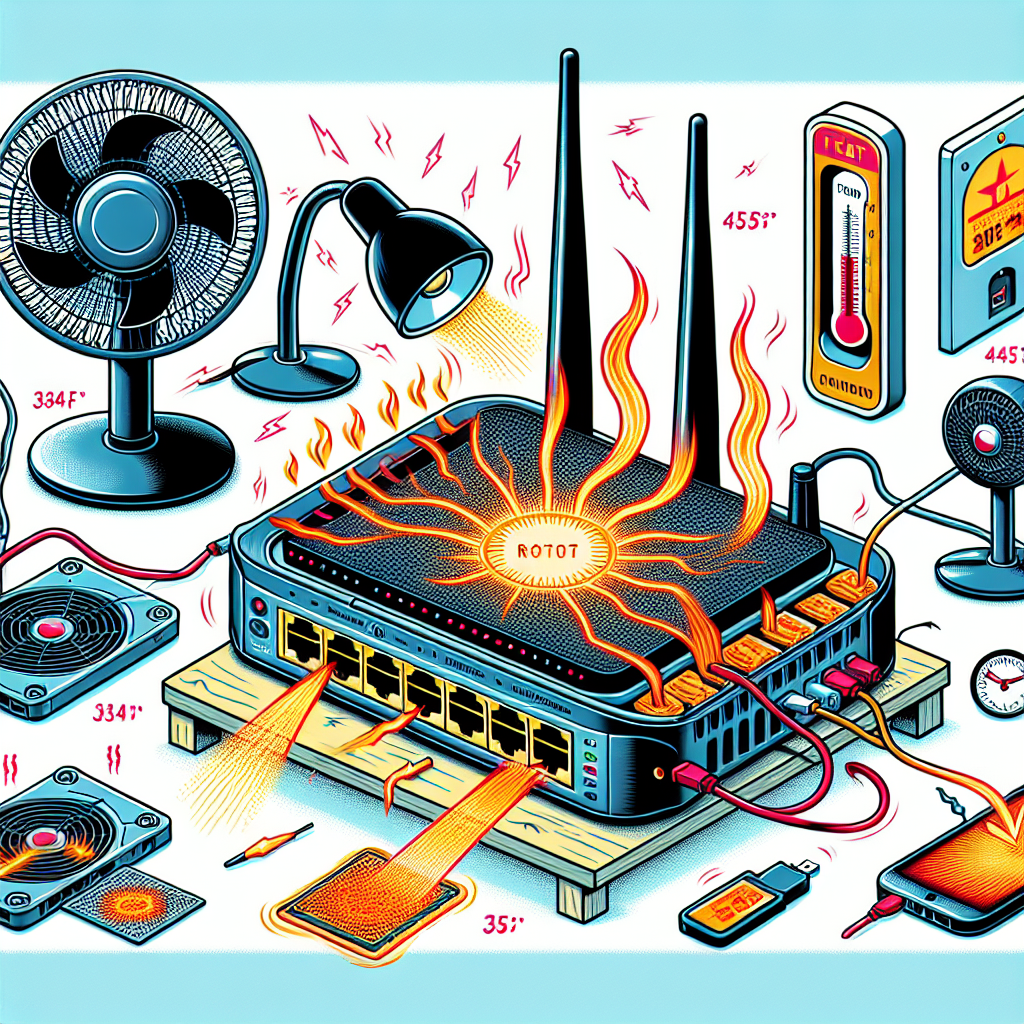In the digital age, where almost every device from smartphones to home appliances is interconnected, a router acts as the backbone of your network. However, like any other electronic device, routers are susceptible to overheating, which can lead to poor performance or even damage. This raises the question: What is the best way to protect your router from overheating?
Why do Routers Overheat?
Understanding the root causes of router overheating can help in taking preventive measures. Common causes include:
- Continuous Operation: Routers often run 24/7, leading to heat accumulation.
- Ventilation Issues: Poor placement can block airflow, causing heat to build up.
- High Traffic: Extensive data transfer increases the load on the router, generating more heat.
- Lack of Maintenance: Dust and debris can clog the vents, restricting airflow.
- Environmental Factors: High ambient temperatures can exacerbate overheating issues.
The Impact of Overheating on Routers
Overheating can have several negative impacts on a router, such as:
- Signal Drops: Frequent disconnections and reduced signal strength.
- Sluggish Performance: Longer loading times and delayed responses.
- Shortened Lifespan: Components wear out faster, leading to premature failure.
- Fire Hazard: In extreme cases, overheating may pose a risk of fire.
Protect Your Router from Overheating
Here are some effective ways to prevent your router from overheating:
1. Ensure Proper Ventilation
Place your router in a well-ventilated area to allow for sufficient airflow. Avoid placing it in enclosed spaces or stacking other devices on top of it.
2. Elevate the Router
Elevating your router can improve air circulation. Use a stand or mount it on a wall to keep it off the ground.
3. Clean Regularly
Dust and debris can obstruct vents and reduce airflow. Regularly clean your router by gently wiping it with a dry cloth and using compressed air to clean the vents.
4. Use a Cooling Pad
Cooling pads, typically used for laptops, can also be effective for routers. Place the cooling pad underneath the router to help disperse heat.
5. Monitor Firmware Updates
Manufacturers often release firmware updates that optimize performance and resolve overheating issues. Regularly check for and install these updates.
| Method | Benefits |
|---|---|
| Proper Ventilation | Improves airflow and temperature regulation |
| Elevation | Enhances air circulation |
| Regular Cleaning | Prevents dust buildup |
| Cooling Pad | Disperses heat effectively |
| Firmware Updates | Addresses potential software-related heat issues |
6. Limit Heavy Usage
Avoid overloading your network with high-bandwidth activities like streaming and large downloads simultaneously. Schedule such activities during off-peak hours.
7. Optimal Placement
Keep the router away from direct sunlight, heaters, and other heat-generating appliances. Place it in a central location to ensure minimal obstruction and optimal signal distribution.
8. Implement Power Cycles
Regularly power off your router for a few minutes to allow it to cool down. This practice can significantly reduce the chance of overheating.
Additional Tips for Long-Term Maintenance
- Upgrade Hardware: If you have an old router, consider upgrading to a newer model designed for better heat management.
- Use Quality Adapters: Low-quality power adapters can generate excessive heat. Always use the adapter provided by the manufacturer.
- Install Heat Sinks: Some advanced users attach heat sinks to the router for improved heat dissipation.
Conclusion
Preventing your router from overheating is crucial for maintaining a stable and efficient home network. By following the strategies and tips outlined above, you can extend the lifespan of your router, ensure better performance, and reduce the risk of potential damage. Remember, regular maintenance and smart positioning are key to keeping your router cool and functional.

